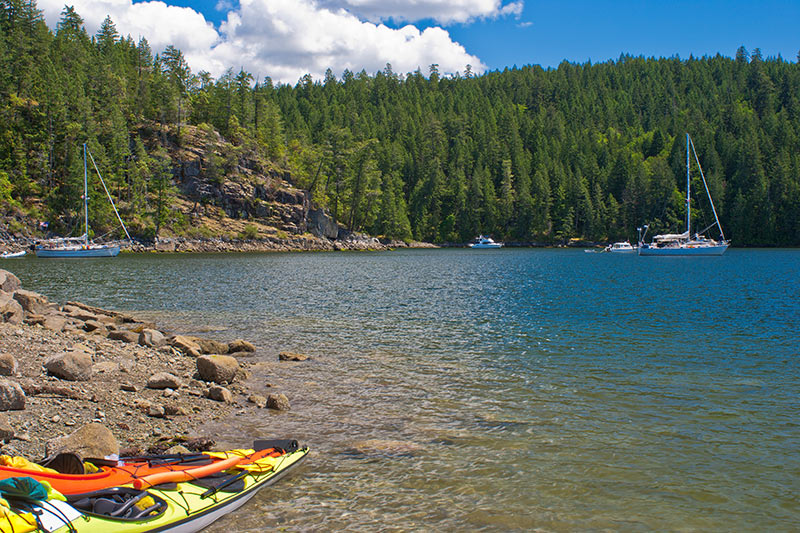The Stein Valley is one of the last untouched watersheds in the southwestern part of British Columbia. The enormous 107,191-hectare Stein Valley Nlaka’pamux Heritage Park encompasses a wilderness area known for its spectacular scenery and important historical, cultural and spiritual values. This is a user-maintained area, with 150 km of hiking trails and routes, four cable crossings, a suspension bridge and several wilderness campsites.
Stein Valley Park offers limited opportunities for easy day hikes (primarily in the lower valley) but extensive opportunities for multi-night backpacking trips over moderate to difficult terrain. With limited Ranger and Stein Valley Warden patrols, visitors must be self-sufficient and prepared for all eventualities.
Stein Valley Nlaka’pamux Heritage Park was officially protected in 1995 and is jointly managed by the Lytton First Nation and BC Parks. The name “Stein” comes from the Nlaka’pamux word “Stagyn”, which means “hidden place” referring to the fact that the valley and the extent of the watershed is not very noticeable from the Stein River’s mouth on the Fraser River. The valley has been extremely important to the Nlaka’pamux people for thousands of years, both spiritually and for sustenance. This is evidenced by the large number of pictographs still visible today in various parts of the valley, ranging in size from single symbols to one of the largest pictograph sites in Canada.
One such site is Asking Rock near Stryen Creek. Here the Nlaka’pamux stop to pray and ask permission to travel the valley safely. Some make offerings of burnt sage and tobacco to accompany their prayers. When visiting these areas, please respect the rock-paintings and do not touch them.
The Stein Valley straddles a transition zone from the dry climate of the interior to the wetter environment of the Coastal Mountains. This, combined with a large elevation gradient, has resulted in very diverse vegetation communities within the park. There are several unique and identifiable forests within the park, with ponderosa pine in the lower valley, Douglas fir in the mid-valley, and hemlock, cedar, spruce and fir in the western end of the valley. Floodplain forests along the river are dominated by black cottonwood mixed with aspen and birch. Higher elevations are noted for stands of Engelmann spruce and subalpine fir. Above those are white bark pine and alpine tundra. During the spring and summer, spectacular flower blooms occur, particularly at higher elevations.
The provincial park’s immense size and natural state provides habitat for a wide variety of wildlife. The Stein Valley is thought to contain over 50 species of mammals, including mountain goat, cougar, wolverine, black bear and grizzly bear. Bird species include golden eagles, sharp shinned hawks, barred owls, pigmy owls, white-tailed ptarmigan, pileated woodpeckers and rufous hummingbirds, as well as several species of chickadees, warblers and nuthatches. The Stein River contains Dolly Varden, char, rainbow trout and Rocky Mountain whitefish, as well as steelhead trout, coho, pink and chinook salmon, which return to the river at certain times of the year to spawn.
The Stein Valley is known for its rugged, wilderness hiking, with over 150 km of trails, including three cable crossings over the Stein River and Scudamore Creek. A very demanding 75-km hike runs the full length of the valley. This hike is suitable only for very fit, experienced hikers who are prepared to be totally self-sufficient. Hikers should allow a week or more to cover the entire length to the park’s eastern boundary near Lytton. Extensive damage was done to parts of the Stein’s landscape by a forest fire in 1996, making some hiking routes difficult to distinguish, particularly west of Scudamore Creek to the midpoint in the upper canyon.
Blowdown Pass is one of the approaches used when hiking into Stein Valley Nlaka’pamux Heritage Park. Hikers are assisted by a logging and mining road that leads 9 miles (15 km) to the pass from Hwy 99 and then descends towards Cottonwood Creek. Plan on taking five to seven days to complete the 32-mile (52-km) moderately difficult hike from Blowdown Pass to the Stein trailhead near Lytton. For those with their sights set a little lower, there’s good alpine hiking around Blowdown Pass itself. Gott Peak (elevation 8,350 feet/2,545 m) is an easy 2.5-mile (4-km) round-trip scramble from the pass. However, watch the loose footing and also the weather, which is prone to change quickly. Great views of surrounding peaks and wildlife are guaranteed on clear summer days.
Sudden changes in the weather can result in a whiteout, making route finding by compass a necessary skill. It’s also important to remember that once you are at Stein Lake, the halfway point, you are at least two days away from any assistance. This is not a trip to be taken lightly. There are other hikes available here, however, which vary in difficulty and length.
Wilderness campsites occur at regular intervals in the park. In the lower and mid valleys, there are 11 developed campsites. In the mid valley from Scudamore Cr. to Stein Camp each campsite has a rustic backcountry toilet and a metal food cache. In other areas of the park where there are no developed campsites, please camp where your presence will have the least amount of impact on the environment. Or, camp where it is obvious others have camped. The nearest amenities including pay phone is in Lytton.
Stein Valley Nlaka’pamux Heritage Park lies west of Lytton and approximately 185 km southwest of Kamloops, or 290 km northeast of Vancouver, both via the Trans-Canada Highway 1. The main trailhead is located on the west side of the Fraser River at Lytton, accessed by crossing the Lytton Ferry. After disembarking from the ferry, follow the road to the right for 4.8 kilometers to the junction with the Stein Valley Road (marked). Turn left and follow it to the parking lot. Other trailheads for accessing the park are located at Lizzie Lake, Blowdown Pass and Texas Creek.
Nearby Regions & Towns
Park Notices


